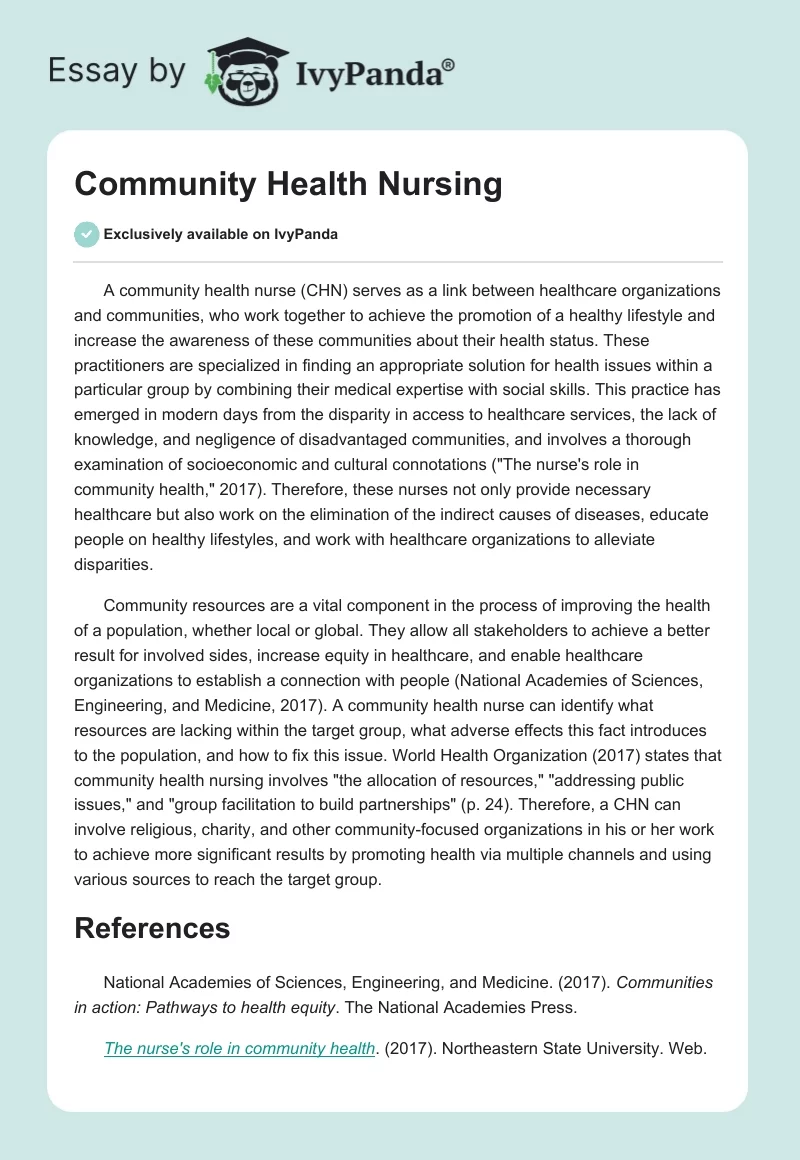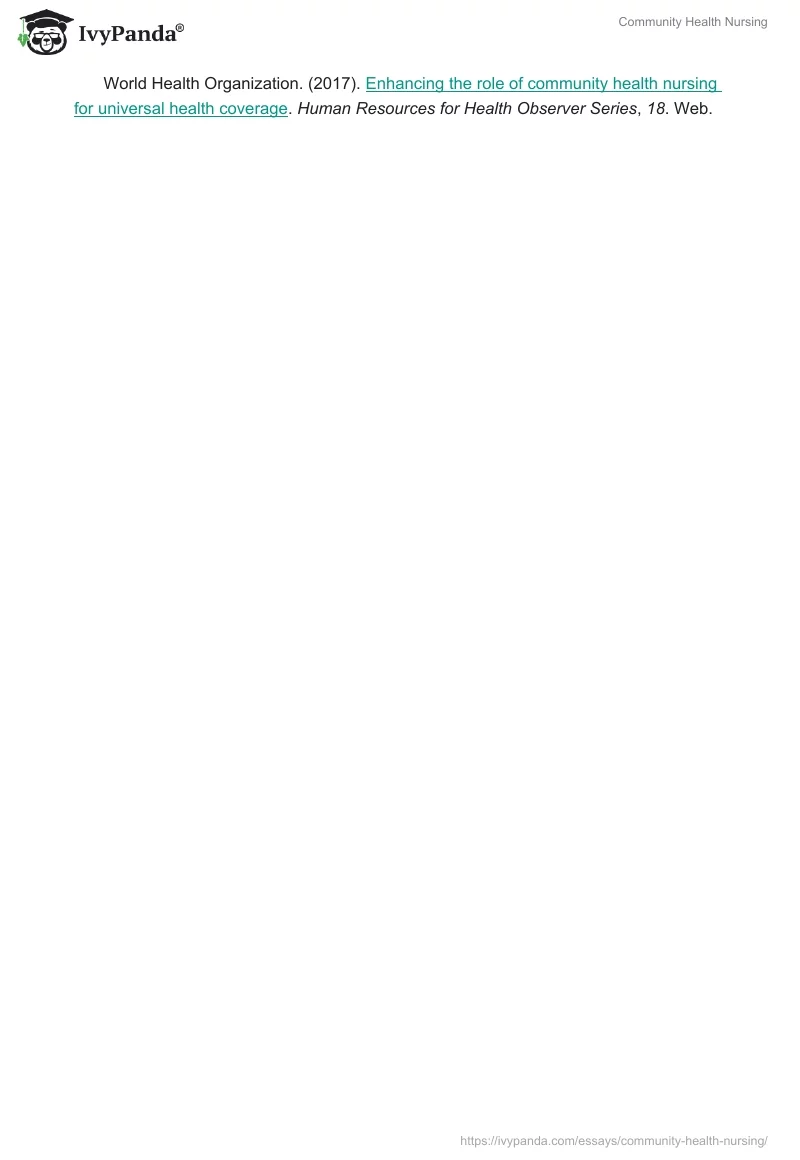A community health nurse (CHN) serves as a link between healthcare organizations and communities, who work together to achieve the promotion of a healthy lifestyle and increase the awareness of these communities about their health status. These practitioners are specialized in finding an appropriate solution for health issues within a particular group by combining their medical expertise with social skills. This practice has emerged in modern days from the disparity in access to healthcare services, the lack of knowledge, and negligence of disadvantaged communities, and involves a thorough examination of socioeconomic and cultural connotations (“The nurse’s role in community health,” 2017). Therefore, these nurses not only provide necessary healthcare but also work on the elimination of the indirect causes of diseases, educate people on healthy lifestyles, and work with healthcare organizations to alleviate disparities.
Community resources are a vital component in the process of improving the health of a population, whether local or global. They allow all stakeholders to achieve a better result for involved sides, increase equity in healthcare, and enable healthcare organizations to establish a connection with people (National Academies of Sciences, Engineering, and Medicine, 2017). A community health nurse can identify what resources are lacking within the target group, what adverse effects this fact introduces to the population, and how to fix this issue. World Health Organization (2017) states that community health nursing involves “the allocation of resources,” “addressing public issues,” and “group facilitation to build partnerships” (p. 24). Therefore, a CHN can involve religious, charity, and other community-focused organizations in his or her work to achieve more significant results by promoting health via multiple channels and using various sources to reach the target group.
References
National Academies of Sciences, Engineering, and Medicine. (2017). Communities in action: Pathways to health equity. The National Academies Press.
The nurse’s role in community health. (2017). Northeastern State University. Web.
World Health Organization. (2017). Enhancing the role of community health nursing for universal health coverage. Human Resources for Health Observer Series, 18. Web.


